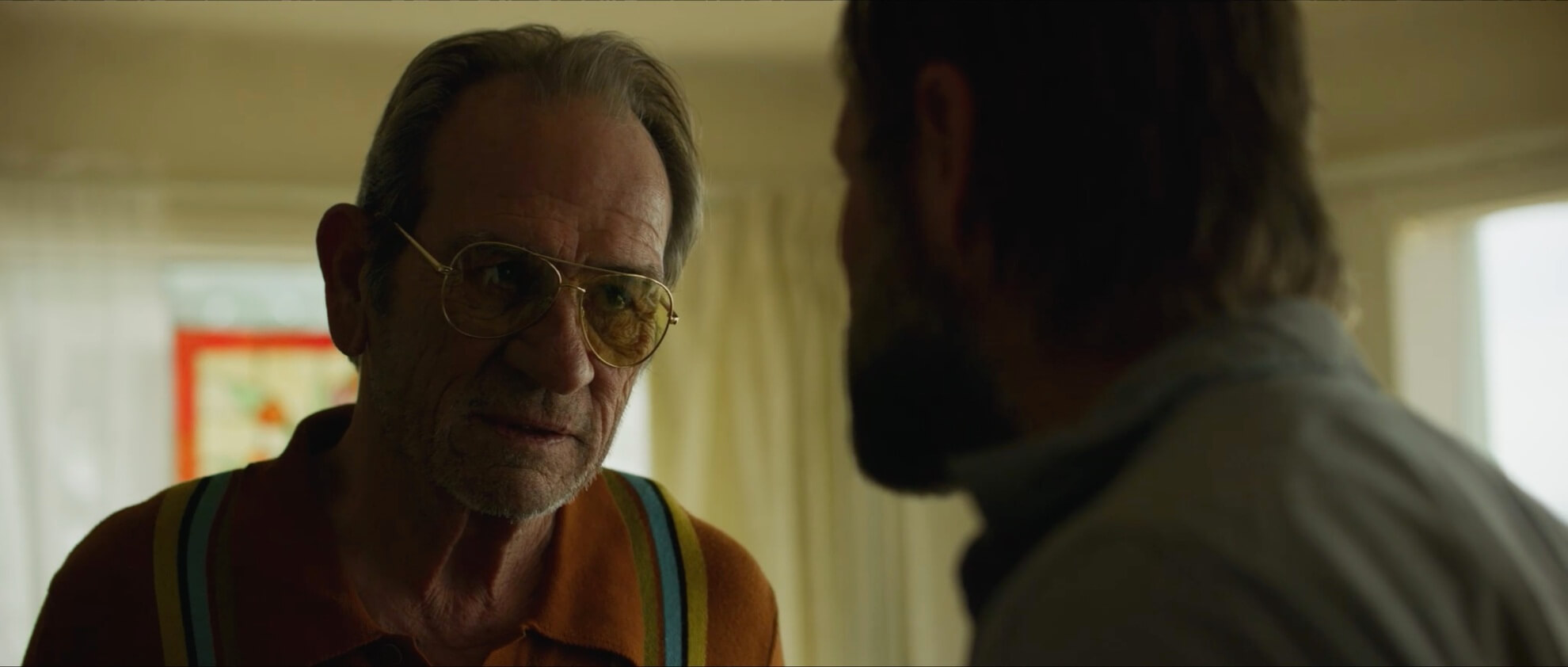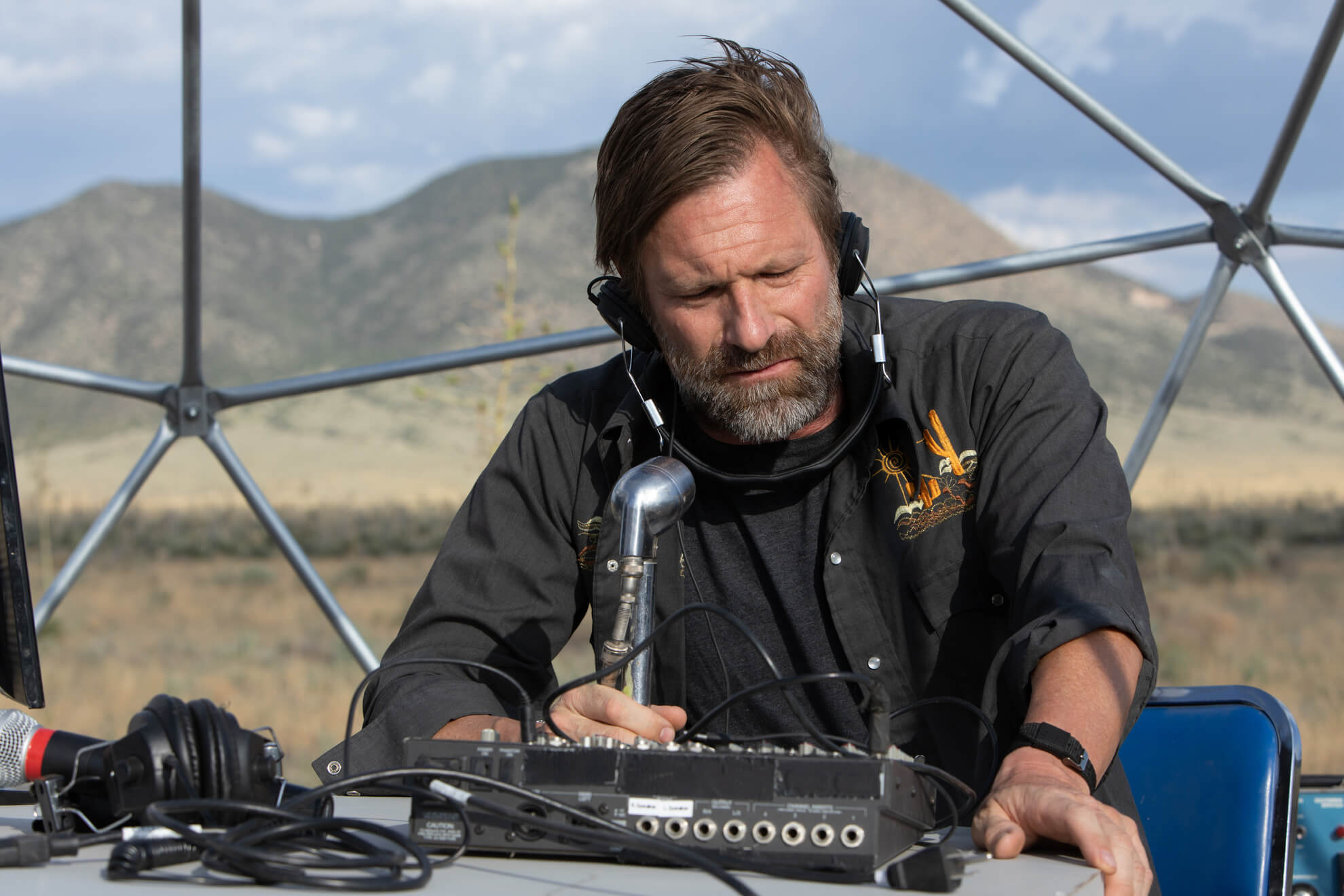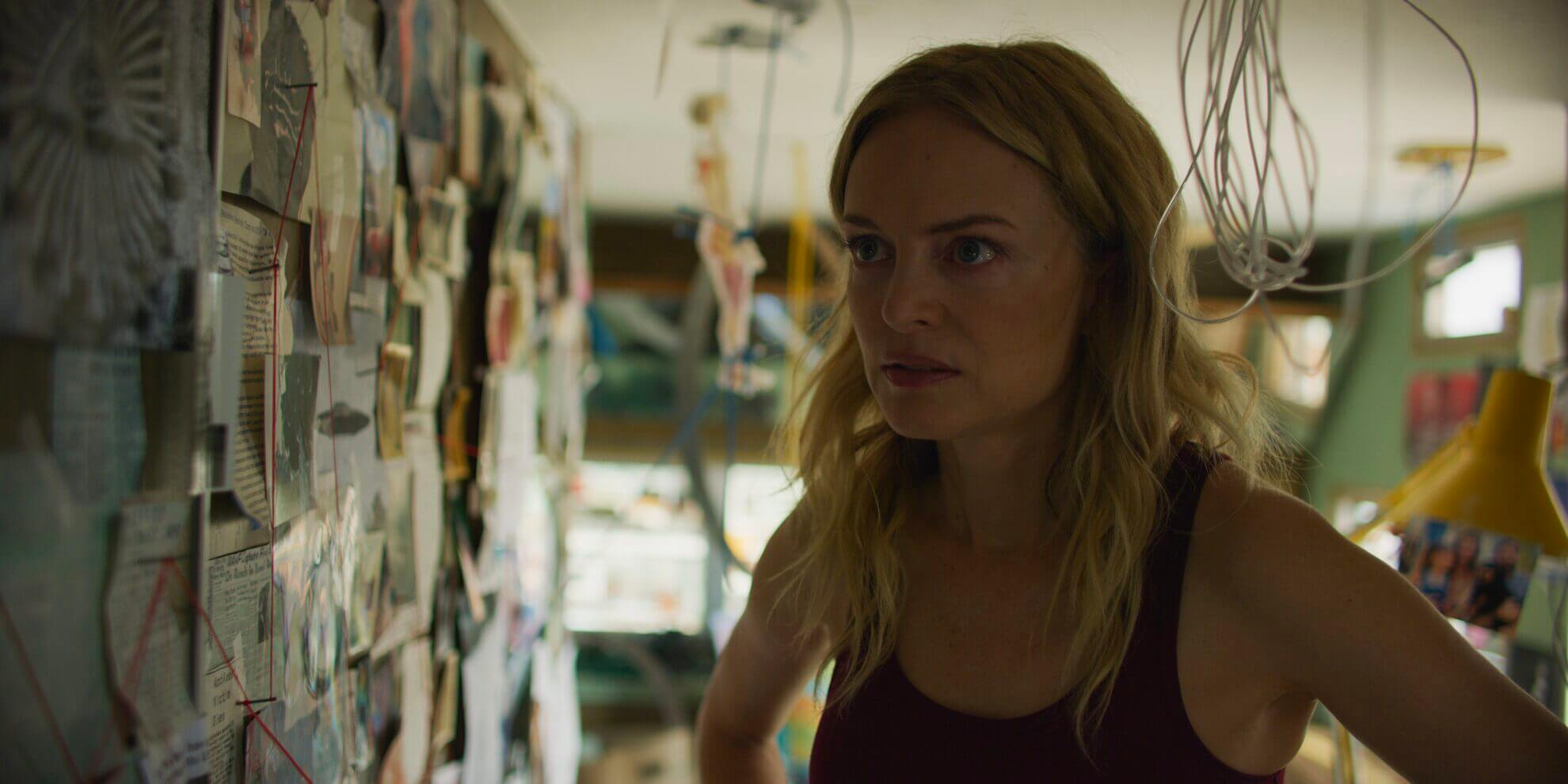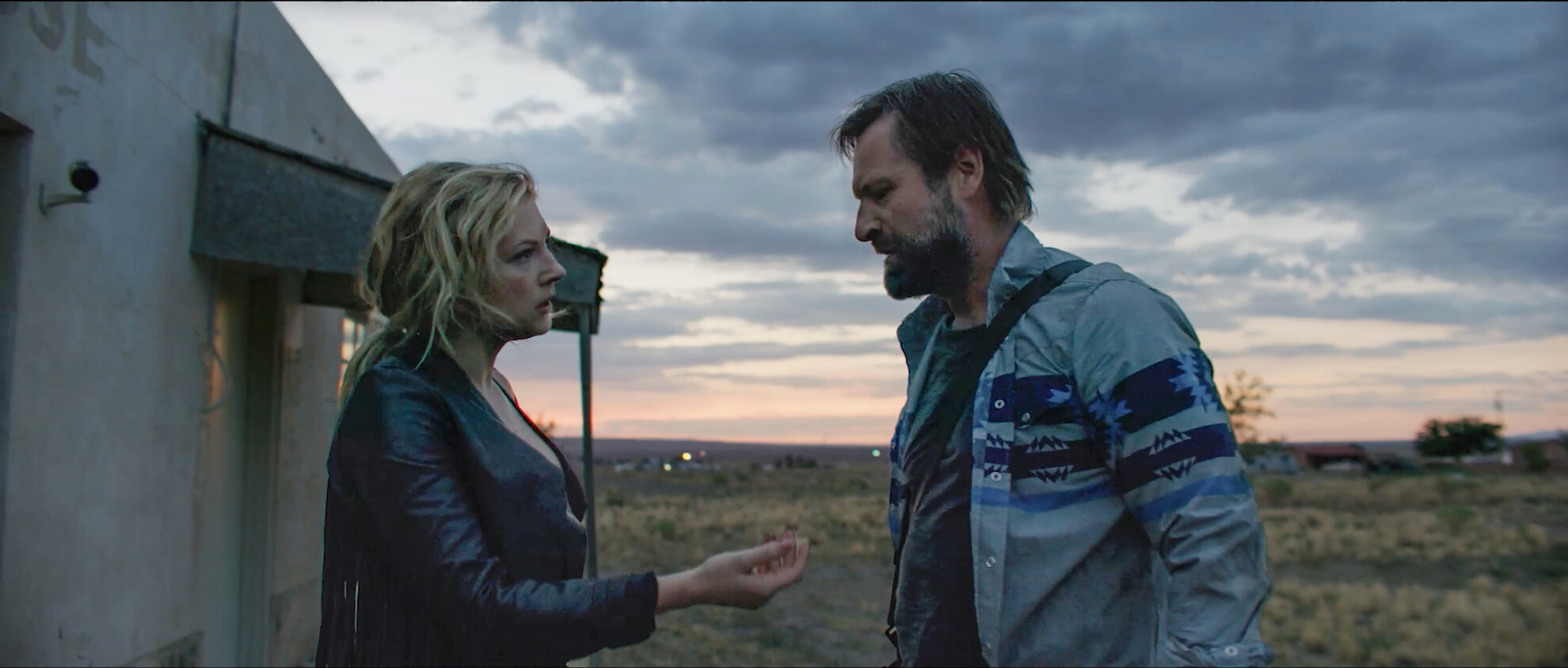Wander is a new conspiracy thriller directed by April Mullen starring Aaron Eckhart, Tommy Lee Jones, and Katheryn Winnick. The stylish drama stars Aaron Eckhart as Arthur Bretnik, a retired private investigator who is hired to investigate a suspicious death in the tiny, isolated town of Wander. Arthur Bretnik suffers from post-traumatic stress disorder which manifests in nightmares as a result of witnessing the tragic death of his young daughter. Believing the current mystery in Wander to be directly correlated to a past investigation and the death of his daughter, Arthur dedicates himself to exposing the truth.

An unreliable narrator. The film plays with the unreliable narrator tool and does so well. The unreliable narrator tool is exactly what it sounds like: a story is told from the perspective of someone who is under the influence of drugs or is mentally-unstable, or for whatever reason can not recount the whole truth. As a result, we can not trust what is being shown or told to us. Early on in the film and throughout, it is suggested to us that in addition to PTSD, Arthur may or may not also suffer from paranoid delusions and/or even schizophrenia. Many of the film's action-packed revealing sequences are shown to us after they happened and are construed as Arthur Bretnik’s memory of the event. From the start, we are unsure if the events are actually happening exactly as Arthur says they are and this adds to the mystery and tension. Don’t worry though! Once the film wraps up, there are no questions as to how things went down.

The conspiracy theorist as a character. Wander is written by Tim Doiron. Tim was a writer on multiple episodes for two different detective documentaries. Likely, this was something that helped him write the private investigator character of Arthur Bretnik. The film takes a very respectful tone with conspiracy theorists. Normally, a character like Arthur Bretnik would be the crazy sidekick who needs to be reeled back or the laughing stock. Arthur is never either of these things. He is realistically portrayed and fully fleshed out as a character, not a caricature. Society’s view of people like him is taken into account and represented by Elsa, a concerned and supportive friend and her less than supportive, kind of judgemental boyfriend. Neither of them believes Arthur but Elsa shows real worry for him. Arthur’s overly cautious nature is shown as a set of tools he uses to investigate. He checks spaces for cameras and knows his exits. He searches through his hotel room before setting up his workspace. He moves locations multiple times and knows exactly when a location has been compromised. He uses multiple cell phones. Arthur is the perfect person for a job exposing a conspiracy theory. Aaron Eckhart gives his all to this character. From facial expressions, to the sounds (specifically laughter) to the movements and odd little ticks that make us human, Aaron Eckhart allowed himself to really become this character onscreen and it truly made his performance a marvel.

The reality of human experimentation in the US. The conspiracy that the film’s plot revolves around is played up for the sake of the movie but the displacement and experimentation of black, brown, and indigenous people have a long history in America. There were torturous biochemical and dermatological experiments happening to the 80% black inmates at Holmesburg prison for more than 20 years. Following the atomic blasts, American scientists did experiments and collected data on Japanese citizens who were affected by the radioactive blasts. They thought they were being treated for it. The Tuskegee Study is a famous experiment where African American men were infected with Syphilis and weren’t given the cure for it so scientists could study the long term effects of living with the bacterial infection. The genetic material of Native Americans has been continuously used without consent since the colonizers first arrived. To people of color watching the film, the conspiracy seems very plausible and grounded in true past events. Making us think about the history of the United States and how it factors into modern-day conspiracy theories is part of the beauty of this film.

The location. New Mexico is very much a character in this film. The film was shot on Pueblo, Navajo, and Apache lands, as the film is dedicated to black, brown, and indigenous peoples who have been displaced through border control on stolen land in the United States. The movie’s two cinematographers, Russ De Jong and Gavin Smith present the dusty town of Wander set against the New Mexican desert with beauty. Many of the film’s scenes take place outdoors, fully taking advantage of the beautiful, natural landscape available. The music in the film also undoubtedly matches the setting of New Mexico. Composed by Alexandra Mackenzie, the film’s music is a very appropriate mood-setter.
Wander is certainly a result of the times we live in. We live in times where conspiracy theories have become popularized but also a time where we can look back at the past and see that some nightmarish theories have come to be true.

Watch Wander via Amazon

